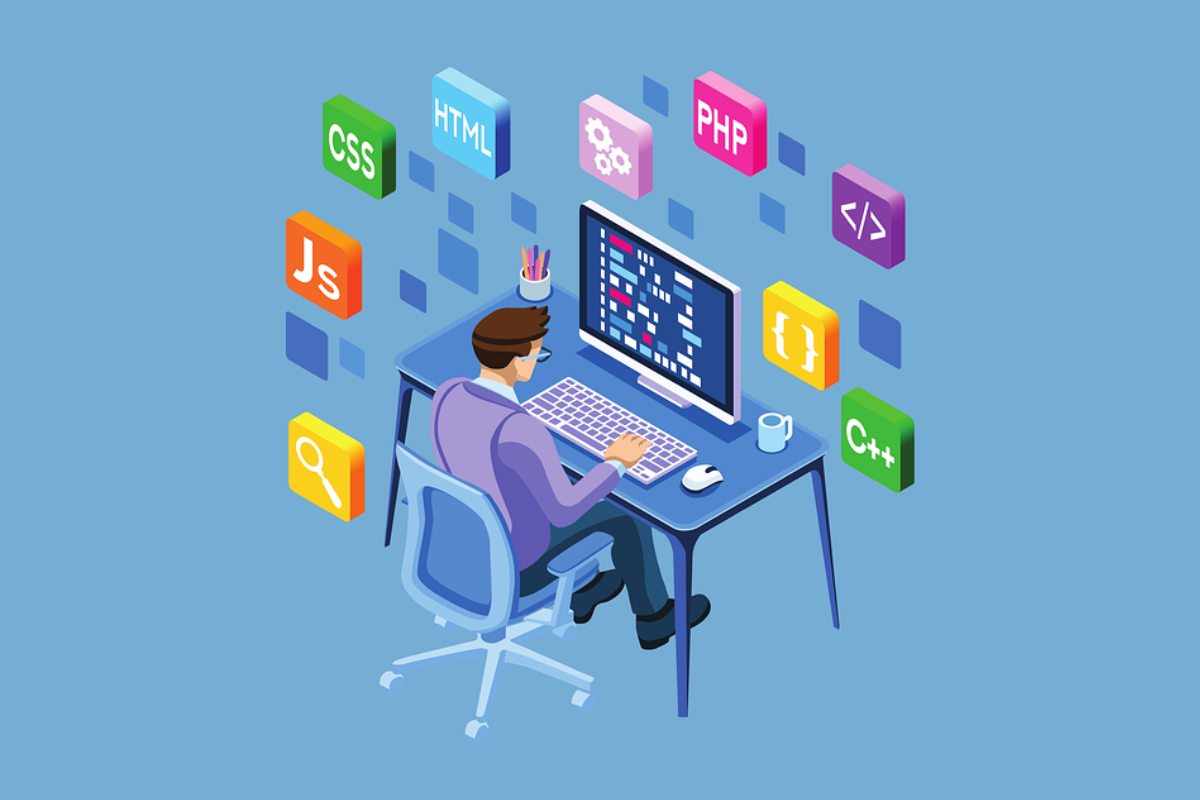
Java has been a dominant force in software development for over two decades, playing a crucial role in shaping modern web applications. As businesses increasingly demand scalable, efficient, and high-performance solutions, Java remains a preferred choice for full-stack development. Its robust ecosystem, platform independence, and extensive libraries make it an ideal technology for building dynamic, enterprise-grade applications.
With the rise of cloud computing, microservices, and API-driven architectures, Java has seamlessly adapted to modern development needs. It powers both frontend and backend development, ensuring that applications run smoothly and securely. Whether it’s Spring Boot for backend services or JavaScript frameworks like Angular or React for the front end, Java remains central to full-stack development.
Introduction: Java’s Role in Full Stack Development
Java is a versatile, object-oriented programming language that enables developers to build powerful, secure, and scalable applications. Its write-once, run-anywhere capability ensures that applications work seamlessly across different platforms, making it a top choice for full-stack development.
A full-stack Java developer is proficient in both frontend and backend technologies, allowing them to develop end-to-end web applications efficiently. Backend frameworks like Spring Boot, database technologies like MySQL and MongoDB, and frontend tools like JavaScript, React, or Angular create a comprehensive Java full-stack ecosystem.
For professionals looking to build expertise in this domain, enrolling in a full-stack Java developer course can provide hands-on experience in building real-world applications, understanding modern development workflows, and mastering essential frameworks. With businesses actively seeking skilled full-stack developers, Java continues to be a valuable skill in today’s job market.
Why Java is the Preferred Choice for Full Stack Development
Java offers several advantages that make it an ideal technology for full stack development:
1. Platform Independence
- Java is a flexible object-oriented programming language that lets programmers create scalable, safe, and potent programs. Because of its write-once, run-anywhere feature, which guarantees that apps execute smoothly on several platforms, it is a great option for full-stack development.
2. Scalability and Performance
- Java is designed for high-performance computing, making it ideal for large-scale applications.
- Multi-threading support allows applications to handle concurrent processes efficiently.
- Companies like Netflix, LinkedIn, and Twitter use Java for their backend services due to its scalability.
3. Secure and Robust Development
- Java’s built-in security features (such as authentication, encryption, and access control) make it a secure choice for enterprise applications.
- It has strong exception-handling mechanisms to ensure system stability and prevent crashes.
4. Large Developer Community and Ecosystem
- Java has a vast community of developers, contributing to an ever-expanding knowledge base.
- Rich libraries and frameworks (like Spring, Hibernate, and Java EE) simplify development, reducing time-to-market.
The Java Full Stack Development Stack
Backend Development with Java
- Spring Boot – A lightweight, production-ready framework that simplifies backend application development.
- Hibernate – An ORM (Object-Relational Mapping) tool that facilitates database interactions.
- RESTful APIs – Java supports API development using Spring MVC, enabling seamless frontend-backend communication.
Frontend Development in Full Stack Java
- js – A component-based library for building dynamic UIs.
- Angular – A TypeScript-based framework with built-in features for handling forms, routing, and state management.
- HTML, CSS, Bootstrap – Essential technologies for designing responsive and engaging interfaces.
Database Management for Java Full Stack
- SQL Databases (MySQL, PostgreSQL) – Structured data storage for transactional applications.
- NoSQL Databases (MongoDB, Firebase) – Flexible data storage for scalable and distributed systems.
Real-World Applications
1. E-Commerce Platforms
Java is widely used in building scalable online marketplaces like Amazon, eBay, and Flipkart. These platforms rely on Spring Boot and Hibernate for backend transactions, React.js for the front end, and MySQL for data management.
2. Banking and Financial Applications
Financial institutions trust Java for its security and reliability. Applications like online banking portals and fintech solutions leverage Spring Security, JWT authentication, and encryption techniques to protect sensitive data.
3. Healthcare Management Systems
Java-based healthcare applications handle patient records, billing, and real-time monitoring using a combination of Spring Boot, REST APIs, and cloud integration.
4. Enterprise Resource Planning (ERP) Solutions
Companies rely on ERP systems to manage their business operations. Java-based ERP applications integrate inventory management, HR solutions, and customer relationship management (CRM).
The Future of Java in Full-Stack Development
1. Integration with Cloud Computing
Java applications are increasingly being deployed in cloud environments like AWS, Google Cloud, and Microsoft Azure to improve scalability.
2. Microservices Architecture
The shift from monolithic applications to microservices architecture is making Spring Boot and Kubernetes popular choices for modern development.
3. AI and Machine Learning in Java
With the rise of AI-driven applications, Java frameworks like Deep Java Library (DJL) and Deeplearning4j are gaining momentum in machine learning and predictive analytics.
4. Low-Code and No-Code Platforms
Java is also being integrated into low-code and no-code platforms, enabling faster application development with minimal coding effort.
How to Become a Full-Stack Java Developer
To excel in full-stack development, aspiring professionals should:
- Master Java fundamentals, OOP concepts, and design patterns.
- Gain proficiency in Spring Boot, Hibernate, and REST API development.
- Learn frontend technologies like React, Angular, and Vue.js.
- Develop database management skills using MySQL, PostgreSQL, or MongoDB.
- Work on real-world projects to gain hands-on experience.
For structured learning, enrolling in a Java full-stack developer course provides step-by-step guidance, industry-relevant projects, and mentorship from experienced professionals.
Conclusion
Java remains a cornerstone of modern full-stack development, offering scalability, security, and cross-platform compatibility. Its backend strength, combined with modern frontend technologies, enables developers to build efficient and interactive applications.
As demand for full-stack developers continues to rise, learning Java and its associated frameworks is a smart investment for career growth. Whether you are a fresh graduate, IT professional, or career switcher, mastering Java and full-stack development methodologies can open up lucrative opportunities in web development, enterprise solutions, and cloud computing.
By staying updated with emerging trends, honing technical expertise, and building real-world applications, professionals can thrive in the evolving landscape of full-stack Java development.
Also Read: How Do You Balance Manual and Automated End-to-End Testing?
